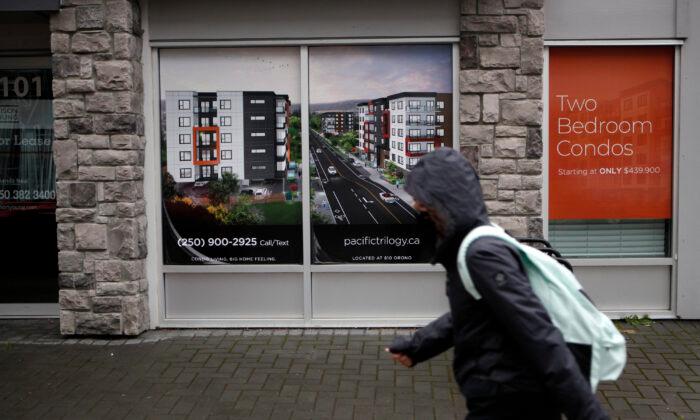Young Canadians are losing $750 a month on average living in cities across the country, and to break even, they will have to give up on entertainment, transportation, and dining out, a public policy think tank says.
“Simply put, Canadian cities aren’t affordable for young people.”
Overall, cities in the East are the least affordable, mainly due to the East Coast salary discount, while youths living in cities in Alberta and Quebec have more opportunities to save money, Youthful Cities found.
In 15 of the 27 cities examined, young people are spending far more than what they can make—higher than the average $750 monthly deficit. Halifax, Nova Scotia, tops the list of the 27 cities where young Canadians have a monthly deficit of close to $1,300. It’s followed by those living in Yellowknife, Northwest Territories, who have a monthly deficit of roughly $1,150, and Moncton, New Brunswick, about $1,140.
Lethbridge, Alberta, is the most affordable city, with a monthly deficit of $34.92. The low rental housing costs in the city contribute to its higher affordability ranking. Renting a single-bedroom apartment in Lethbridge is well below $1,000 per month, compared to Toronto where average rents are nearly $2,000 a month.
“Affordability shouldn’t only be about the basic necessities for survival,” Youthful Cities spokesperson Claire Patterson said in the release.
“Affordability should also include the ability to pay for those things that contribute to the vibrancy of a person’s life when they are able to move forward and meet those key milestones we view as signs of success. In today’s Canadian cities opportunities to thrive simply aren’t equally accessible to all young people.”
Youthful Cities said the slow increases in salaries and wages is one of the key barriers to affordability. According to its index, in all of the cities measure, the minimum wage is not a liveable wage, and gaps range between $2 and $10. In Yellowknife, which has the largest gap, the difference between minimum wage and liveable wage is $9.57 per hour.
Full-time employment increases a young person’s ability to afford a city, but the think tank said it’s still not a guarantee to affordability, as two-thirds of Canadian cities are still unaffordable even when young people are employed full time.
Patterson warned that Canada could see “a massive drain on critical youthful talent now and into the future” if barriers for young people remain unaddressed.
“Today’s young people are still working to afford the toast,” he said. “Avocados seem a long way off.”
Youthful Cities’ Real Affordability Index was created in partnership with the Royal Bank of Canada (RBC). Mark Beckles, vice-president of RBC’s social innovation and impact group, said the affordability issue could also have mental health impacts on youths.
“Young peoples’ inability to afford to live in urban areas can have many compounding negative effects including increased mental health concerns as they face fears of missing out on life ahead and attaining their goals and aspirations,” Beckles said.





